This traditional Spanish vegetable paella recipe is one of my favorites. It's typical from Murcia, where they still make paellas on an open fire! This is a vegetarian paella recipe, and the perfect addition to your next barbecue.
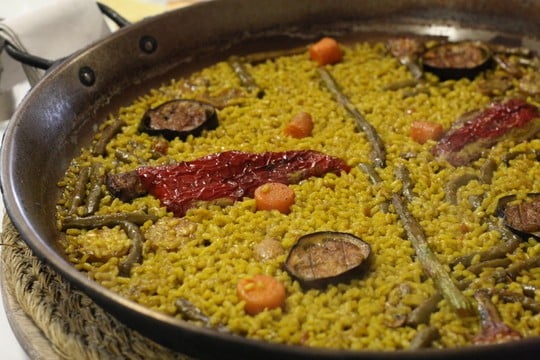
Whether you call it paella or not, we all agree that Spanish rice dishes can be exceptionally good.
This easy vegetable paella recipe is a bit different than the "classic" paella you might have in mind. But don't forget that the most classic Spanish paellas are actually made with rabbit and snails -- no seafood or chorizo in sight!.
My favorite Spanish paellas come from the region of Murcia, where gigantic paella pans are set atop burning grapevines and used to make some of the most delicious family-style meals imaginable.
This vegetarian paella recipe (Arroz de Verduras a la Murciana) is a rice dish that makes use of all the fresh and delicious vegetables that are grown in Murcia. Colorful, healthy and mouthwatering, making this vegetable paella is a dish well worth the trouble!
Easy Vegetable Paella Recipe
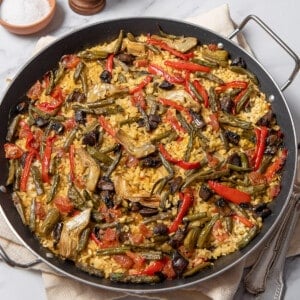
Murcian Style Vegetable Paella
Ingredients
- 2 Cups of paella rice like Calasparra or Bomba
- 1 cup of mushrooms diced (you can use whatever you have available -- try with wild mushrooms if you can!)
- 2 ripe tomatoes peeled and diced
- 1 sweet red pepper cut into thin strips
- 2 cups of green beans cut into 1 inch strips
- 1 bunch of asparagus cut into 1 inch strips
- 4 artichoke hearts cut in four
- 2 cloves of garlic
- A few threads of saffron
- 1 T of chopped parsley
- 2 T extra virgin olive oil
- 5 cups vegetable stock or chicken stock if you are not vegetarian
- Salt if necessary-- the stock may already have salt
Instructions
- Dice the mushrooms into bite size pieces and sear in the hot olive oil.
- Remove with a slotted spoon (keeping the oil in the pan) and reserve.
- In the same oil, fry the cloves of whole garlic until tender.
- Remove the cloves of garlic and mash in a mortar and pestle with the parsley and saffron too.
- Add the vegetables to the pan and sauté in the hot olive oil for two minutes.
- Add the garlic paste and the mushrooms (with any juices that came out) back to the pan.
- Add one cup of stock and let everything simmer at a low heat for 20 minutes.
- Add the two cup of rice and four cups of stock to the pan.
- Give everything a stir and bring the mixture to a boil.
- As soon as the liquid starts to boil, lower the heat to low and let it cook for 15-20 minutes -- don't stir during this time!
- When the rice is al dente and the liquid is absorbed, you're ready to eat!
- To get the beloved "socarrat" (the caramelized, lightly burnt crust on the bottom of the paella pan) put a kitchen towel over the finished rice and let it rest for 5 minutes. Then remove the towel and put the paella back on the heat on high. Any liquid at the bottom of the pan will start to evaporate, and when you start to hear a sizzle (in Spain we say it sounds like rain) let it caramelize for about 30 seconds (it should not smell burnt). Remove and serve immediately.
Nutrition
This easy vegetable paella recipe is one of the simplest I've encountered, and it is truly delicious. While you could make it in another type of pan, I must say the paella pan does wonders (as does a gas stove or any sort of open flame).
What other Spanish paellas would you like the recipe for?
See also: Vegetarian Tapas in Spain
Visiting Spain soon? See here for a guide to the best paella in Madrid!
Photography by Giulia Verdinelli


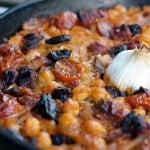
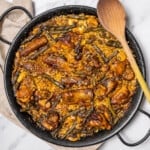
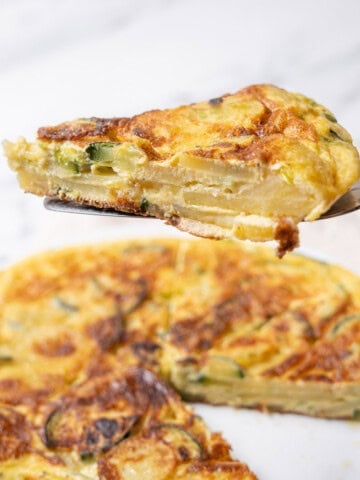
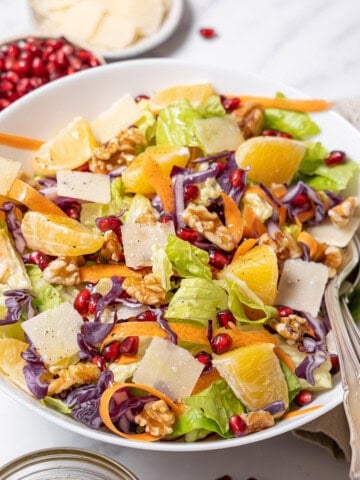
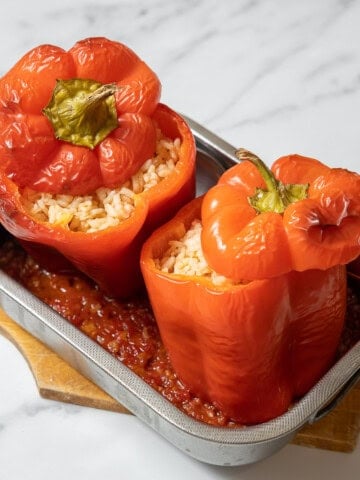
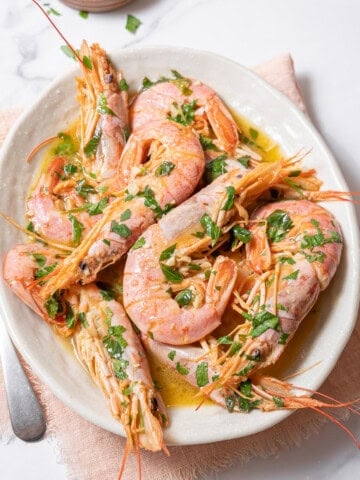
Lily
Hi, would love to try your recipes. Please could you explain how much you mean by a cup? I am from England
Thanks 🙂
Bona Fide Foods
The rice of Calasparra of the Region of Murcia has properties that other rice of the zone do not have. It is the best rice in the world, famous for its quality and essential for dishes such as paella. Do not miss the opportunity to taste it!
Amy
This is really interesting! I'm moving to Spain very soon and I'll definitely be trying this! thank you! (without the pork though - yuck!)
Elaine Scanlan
Love this recipe Lauren - I must admit I never eat the traditional version, but I'm always transfixed by the snail stalls in Spanish markets, particularly when there are dozens of the things trying to slither away. Think I'll stick to the pork!
Lauren Aloise
I'm not a big snails fan either, but I do love the chicken and rabbit version!
Michelle Elle
OMG your paella looks/sounds so delicious! I'm personally a big fan of the black paella (squid/octopus ink paella?). I need to buy a paella so I can make a paella!
Lauren Aloise
Yum! You definitely need a paella in your life 🙂 And I agree the squid ink one is delicious, but can be messy at home!